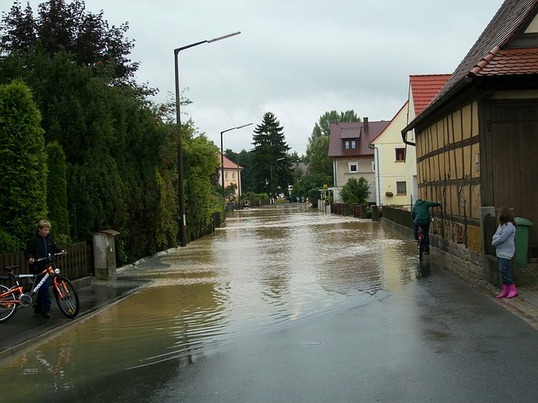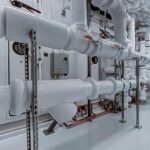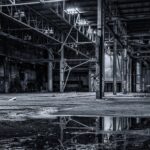
When it comes to luxury houses, water damage may be an unforeseen intruder that disturbs the peace of lavish interiors. From exquisite marble floors to elaborate chandeliers, the stakes are high when it comes to safeguarding your investment.
This comprehensive guide serves as your compass in the event of water damage, providing a carefully crafted journey through the painstaking restoration process. As we delve into each aspect—from determining the origin of the problem to safeguarding the fine finishes—you will acquire knowledge on how to handle water damage in a luxury home. Our dedication extends beyond simple repairs; it also includes making sure that every nuance of your home’s elegance is preserved.
Luxury homes are more than just places to live; they are statements of tasteful design and well-chosen details. Water damage disturbs this haven of refinement, necessitating a methodical and knowledgeable approach. This guide will help you navigate the complexities of handling water damage in a luxury home, where every little detail counts.
See also our post on A Comprehensive Guide on Preventing Water Damage in an Urban Environment
Identifying and Addressing the Source
Preserving the grandeur of a luxury home begins with identifying and resolving the source of water damage.
Source Identification Strategies:
- Conduct Thorough Inspections: Regularly inspect your home for signs of leaks, cracks, or compromised structures. Vigilance allows for early detection and intervention.
- Examine Roofing and Gutters: Check the condition of your roof and gutters. Damaged or clogged gutters can lead to water seepage, affecting both the exterior and interior of your luxury home.
- Evaluate Plumbing Systems: Assess the integrity of plumbing systems, including pipes, fittings, and connections. Leaks in hidden areas can cause significant damage if left unchecked.
- Inspect Windows and Doors: Ensure that windows and doors are properly sealed. Improper seals can allow water infiltration during storms or heavy rainfall.
- Evaluate Landscape Grading: Examine the grading of your landscape to ensure proper water drainage away from the home. Inadequate grading can lead to water pooling around the foundation.
Immediate Mitigation Measures
Swift action is crucial to mitigate the immediate impact of water damage and prevent further harm.
Emergency Mitigation Strategies:
- Stop Water Flow: If possible, immediately stop the source of water. Shut off water mains in case of plumbing issues and take preventive measures against additional water ingress.
- Remove Valuables from Affected Areas: Safeguard valuable items by relocating them from water-affected areas. This prevents further damage to prized possessions.
- Deploy Absorbent Materials: Use absorbent materials such as towels or rags to soak up standing water. Swift removal of water minimizes the risk of structural damage and mold growth.
- Utilize Fans and Dehumidifiers: Enhance air circulation and aid in drying by using fans and dehumidifiers. These appliances expedite the evaporation of residual moisture.
- Engage Emergency Restoration Services: Call upon emergency restoration services for professional assistance. Their expertise ensures a comprehensive and immediate response to mitigate water damage.
Assessing Water Damage Extent
Understanding the extent of water damage is pivotal in formulating an effective restoration plan.
Damage Assessment Strategies:
- Categorize the Damage: Classify water damage based on categories (clean water, gray water, black water) and classes (the extent of damage). This classification guides restoration efforts and safety precautions.
- Inspect Structural Integrity: Assess the structural integrity of affected areas. Identify any compromised structures or materials that may pose risks to both the home’s aesthetics and safety.
- Document Damage for Insurance: Document the damage thoroughly for insurance purposes. Detailed photographs and descriptions provide a comprehensive record for insurance claims.
- Identify Hidden Damage: Look beyond the obvious for hidden damage, especially in concealed spaces or behind walls. Hidden damage can escalate if not addressed promptly.
- Consult Restoration Professionals: Engage restoration professionals to conduct a detailed assessment. Their expertise ensures a comprehensive understanding of the damage and informs a tailored restoration plan.
Comprehensive Restoration Techniques
Restoring water-damaged luxury homes involves a meticulous and multi-faceted approach.
Restoration Strategies:
- Address Structural Repairs: Prioritize structural repairs to ensure the safety and stability of affected areas. Engage professional contractors to assess and address any structural damage.
- Restore Flooring and Finishes: Assess the condition of flooring and finishes, such as hardwood, marble, or intricate tiles. Restoration may involve repairs, refinishing, or replacement to maintain the luxurious ambiance.
- Preserve Specialty Features: Protect and restore specialty features, such as custom millwork, ornate moldings, and unique architectural elements. Craftsmanship should be preserved to maintain the home’s distinctive character.
- Utilize Advanced Drying Technologies: Incorporate advanced drying technologies, such as industrial-grade dehumidifiers and specialized drying mats. These technologies ensure thorough drying without compromising luxury finishes.
- Implement Mold Remediation: Address mold growth promptly and professionally. Mold remediation specialists can safely remove mold and implement preventive measures to inhibit future growth.
Interior Design Considerations
Restoring water-damaged luxury homes requires a keen eye for interior design to seamlessly integrate repairs.
Design Integration Strategies:
- Match Materials and Finishes: Strive to match replacement materials and finishes seamlessly with the existing design. Consistency maintains the aesthetic flow throughout the home.
- Coordinate Color Palette: Ensure that repaired or replaced elements coordinate harmoniously with the overall color palette of each room. This attention to detail enhances visual cohesion.
- Consider Period-Specific Restoration: In historically significant homes, consider period-specific restoration techniques. This preserves the authenticity of the home’s design and architecture.
- Incorporate Luxury Textiles: Integrate luxury textiles, such as silk drapes or cashmere throws, into the design. These elements add opulence and complement the overall luxurious atmosphere.
- Engage Interior Design Professionals: Collaborate with interior design professionals to optimize the visual impact of restoration efforts. Their expertise ensures that every element aligns with the home’s distinctive aesthetic.
Advanced Technology Integration
Leveraging advanced technologies enhances both the restoration process and the home’s resilience against future water damage.
Technology Integration Strategies:
- Smart Leak Detection Systems: Install smart leak detection systems to provide real-time alerts for potential water issues. These systems can mitigate risks by enabling swift intervention.
- Climate-Controlled Storage: Invest in climate-controlled storage for valuables and sensitive items. Maintaining optimal temperature and humidity levels protects against deterioration.
- Automated Irrigation Systems: Implement automated irrigation systems with moisture sensors to regulate outdoor water usage. This prevents excessive water near the foundation.
- Remote Monitoring Solutions: Utilize remote monitoring solutions for HVAC and plumbing systems. This allows homeowners to monitor and control these systems from anywhere, preventing potential water-related issues.
- Water-Resistant Smart Home Features: Explore water-resistant smart home features, such as water-resistant smart flooring or moisture-resistant wall coverings. These additions contribute to the home’s resilience against water damage.
Ongoing Maintenance for Luxury Resilience
Safeguarding a luxury home against water damage requires a commitment to ongoing maintenance and vigilance.
Maintenance Strategies:
- Regular Inspections: Conduct regular inspections of the home’s exterior and interior. Proactive identification of potential issues allows for preventive measures.
- Scheduled Roof and Gutter Maintenance: Schedule routine maintenance for the roof and gutters. Keep them free of debris and ensure that seals and flashing are intact to prevent water infiltration.
- Periodic Plumbing Assessments: Periodically assess plumbing systems for leaks or vulnerabilities. Address any issues promptly to prevent water damage.
- Professional Waterproofing: Consider professional waterproofing for vulnerable areas, such as basements or areas prone to heavy rainfall. This enhances the home’s overall water resistance.
- Educate Household Members: Educate household members on water conservation practices and the importance of reporting potential issues promptly. A collective commitment to water-conscious living contributes to the home’s resilience.
See also our post on A Comprehensive Guide on Dealing with Water Damage in Historic Buildings
Conclusion
Dealing with water damage in a luxury home is more than just a restoration project; it is a way to preserve the epitome of elegant living. From quick reactions to incorporating cutting-edge technologies, each step described in this extensive guide is a stroke in the paintbrush of protecting luxury. As you set out to restore and maintain your luxury home, keep in mind that every little thing counts. By being meticulous and dedicated to perfection, you not only fix but also elevate the legacy of your home’s sophistication. May this guide serve as a reliable ally in your quest to preserve the classic elegance that characterizes luxury living.






